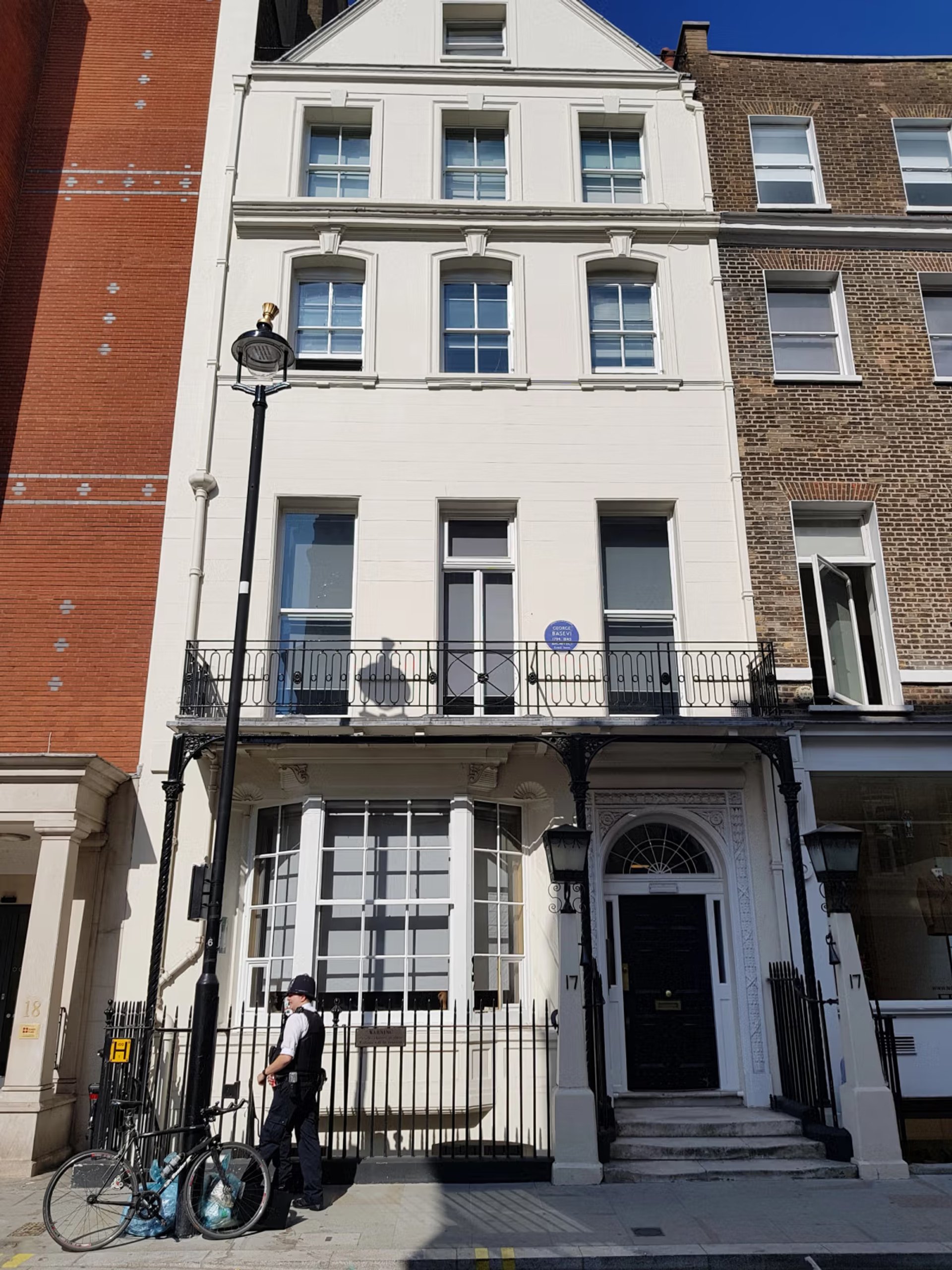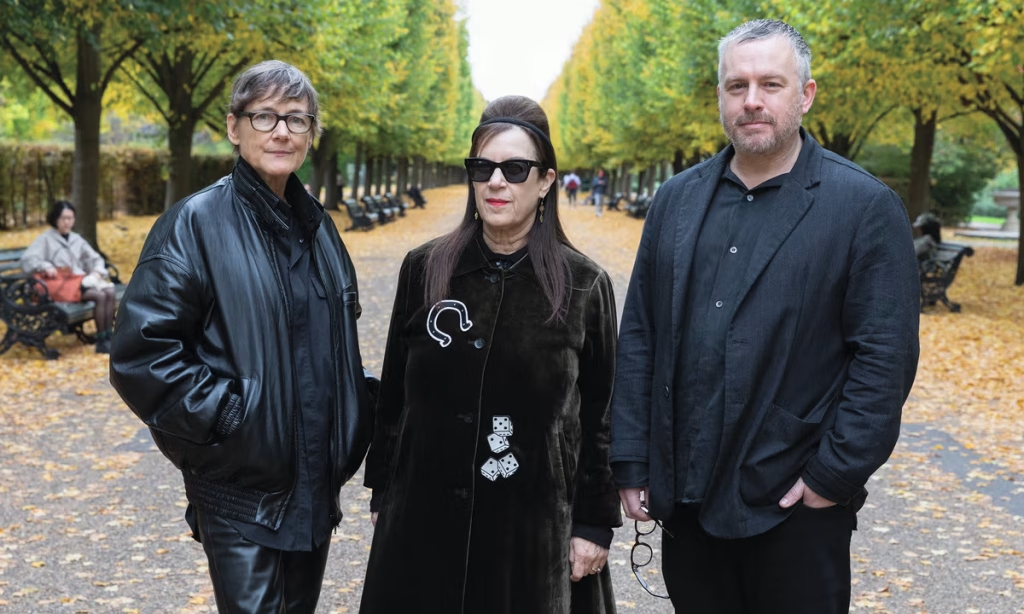Defying any naysayers about the London art market, three of London’s major gallerists are opening substantial new spaces in the capital: Maureen Paley, part of Wolfgang Tillmans’s former studio at 4 Herald Street last week; Sadie Coles, an entire townhouse at 17 Savile Row from 14 October; and Stuart Shave’s Modern Art, a double shopfront at 8 Bennet Street, St James’s, from 14 November.
The Art Newspaper: Why did each of you decide to open a new space at this time?
Sadie Coles: Everything I do tends to be instinctive rather than calculated, but I’ve been looking for a different kind of space with a different kind of tone for quite a long time because both Kingly Street and my former gallery at Davies Street were both quite brutal spaces. I wanted to offer something else to the artists, and I’ve never had a townhouse gallery in London. So, it just seemed like something I hadn’t done before.
Maureen Paley: I wasn’t necessarily looking to expand but when this particular space—which used to be part of Wolfgang Tillmans’s studio—became available, it was something I just couldn’t ignore. It has so much historical and personal significance for me and for the gallery, so this serendipity seemed almost like a magical sign and a moment that I must seize. We’re very happy with the gallery as it is, but we could also use some more space for certain artists to amplify what we already have. We are opening with a show of Wolfgang’s work across all the three spaces called Build From Here.
Stuart Shave: These things are often planned far in advance, but I only signed the lease on this space less than two months ago so it wasn’t years in the making. I needed a bigger space in the West End and this space just came up. For me, it was about making a consolidation. For the last five years we haven’t had our whole team in one place; we were always really fragmented and I wanted to move everything under one roof. Part of this consolidation is also cutting down the number of shows we are doing; this is not any reflection on the market but that’s the kind of detail I want to go into, to focus more.
SC: I’m the same; I want to do longer shows. I think the old six-week show run is quite rare now, even in New York, which has quite a rapid turnover. Longer shows give more of a chance to have meaningful conversations around the work. And in this market, which we are all aware of how challenging it is, making time to sit with your collectors and really talk to them about what you are showing is the way to make it work.
These are indeed challenging times for the UK art market, but you are very much putting your eggs in the London basket.
SC: I really believe in London as an international hub for everything, not just the art market. Right now it feels very dynamic and vibrant. It is a city that just has this endless flow of visitors, one way or the other. Of course, there are changes going on with Brexit and the non-doms exiting [due to changes in the tax rules], and all this stuff, but that’s part of the natural ebb and flow of the city. Some people leave, and then some people arrive. Recently we’ve noticed an increase in people moving here from the United States, for instance, and also a lot more collectors from the Middle East. There is very significant business here. Also, London has these unmissable museum shows all the time which underlines the fact that this is a very very important place to have a gallery. Artists love to make a show in London; it is a place where they want to be seen.
MP: London is a remarkable place and an international hub. It has such an enduring energy and connection with the things that are essential; whether in music, in fashion or in art, you find it across the board. And this survives against the odds. It’s always been against the odds ever since the punk days. As with resilient weeds, you cannot get rid of this spirit; it just comes up again and again.
SS: I’m super-positive about London, too; it remains a leading art scene beside New York. A couple of galleries have closed down, and various journalists have constantly regurgitated this news. But the truth is the art market is always something that you have to navigate and it’s absolutely unfounded that it is as fragile as some people would lead you to believe. By its nature, running a gallery means negotiating this.
MP: I heartily agree. The delicate quality of what it is we do is not to be underestimated. And I definitely think that when people fixate on negative things, they don’t always get the full story, either.
SC: The strength of London is also made visible by the absolute dynamism of the younger scene. There are so many good young galleries opening now in London; it feels a bit like the 90s to me. And many of these galleries are growing their own collectors. They’re selling to people they went to university or art college with and they’re showing people of their own generation. I really feel that this is a very, very healthy sign for our future, because it grows new people who enter into the whole scene, and that’s only a positive.
Sadie and Stuart, you are consolidating your West End bases, but Maureen, your loyalty remains rooted in London’s East End.
MP: I’m very loyal to my past; my earliest link was when I opened a project space in Beck Road 40 years ago with the help of the Acme [artists’] housing association and over the years it’s been possible to locate light industrial spaces, even with the many changes in the area. And now I’m surrounded by such brilliant colleagues: Herald Street, Mother’s Tankstation, Project Native Informant, Rose Easton directly around us, then Emalin, The Approach just up the road—the list goes on. I think that London’s east/west divide should not be over-emphasised; it’s just about where do you go to see good art?
The art world now is very different to when you all first set up your galleries: Sadie in 1997, Stuart in 1998 and Maureen in 1984. What would you identify as a major change, for better or for worse?
SS: A major one is the internet. When I first opened, we were still sending transparencies; it was unthinkable that you could send a jpeg. That’s a change to the global art world as a whole and the things that expedite it.
MP: When I got started it was with a typewriter and carbon paper, and I said I’d never sell anything through an email. It wasn’t even possible to conceive of what you’d be doing by computer, and it has certainly created a more even playing field. Also, when Frieze began, the UK got an art fair that made a big difference in connecting to things internationally.
SC: Absolutely the technology has brought enormous change and speeded everything up. But we are still with paintings or objects that are completely unique. And it is still a person-to-person business, both in the relationships with the people you are selling to, but also with the artists. It’s really a one-on-one business, and that hasn’t changed at all. And, in a challenged market, that actually becomes more crucial.
Modern Art’s new space in St James’s will bring the entire gallery under one roof
Courtesy Modern Art

Sadie Coles HQ has taken on a Savile Row townhouse
©CVB/Wiki Images
Maureen Paley’s newly opened East End location was previously part of Wolfgang Tillmans’s studio
Courtesy Maureen Paley, London
